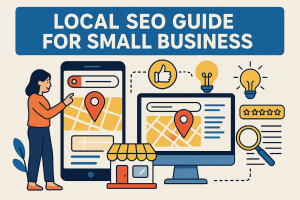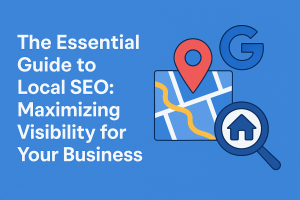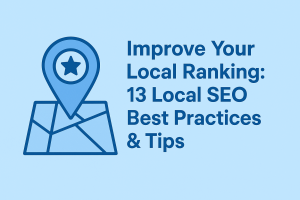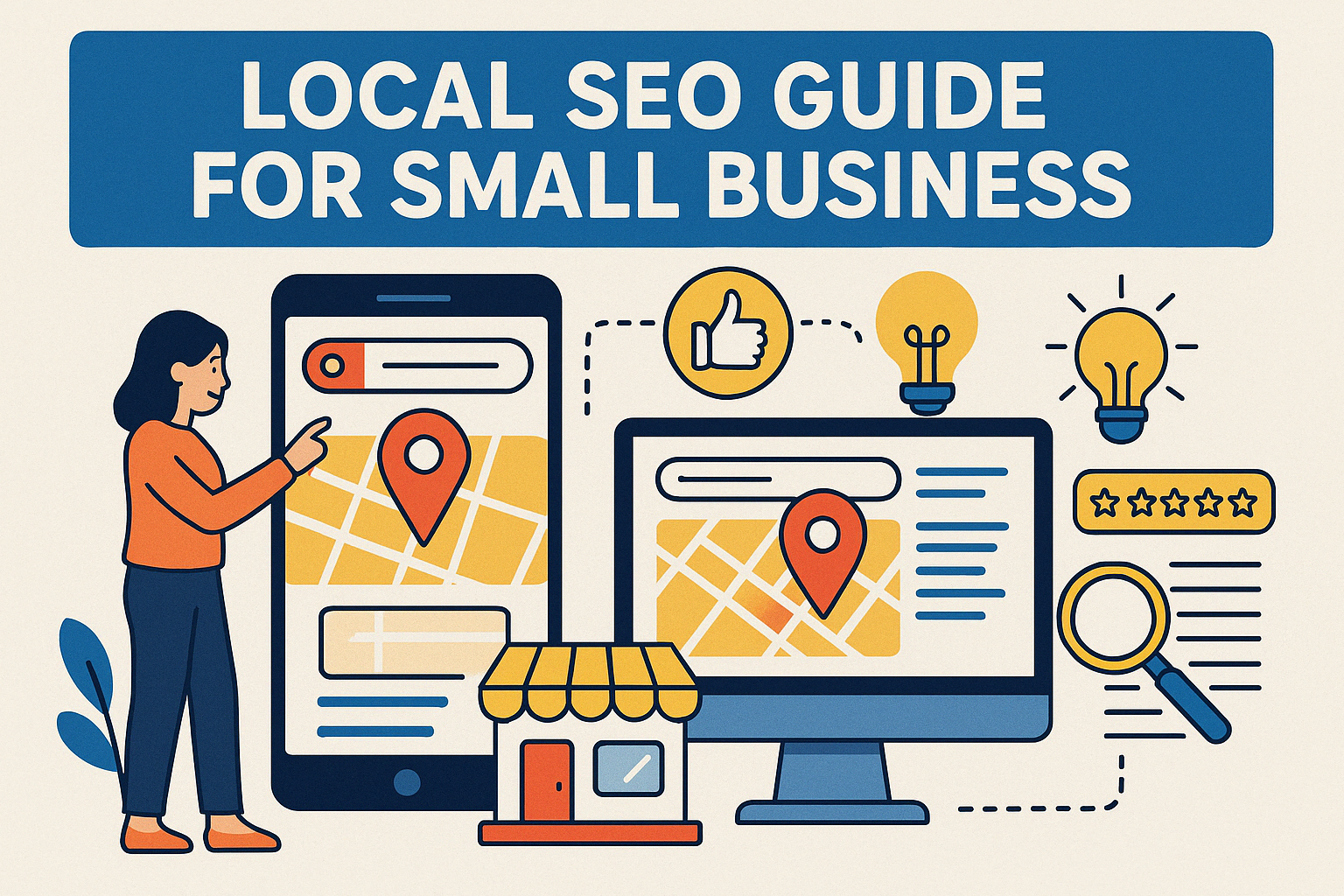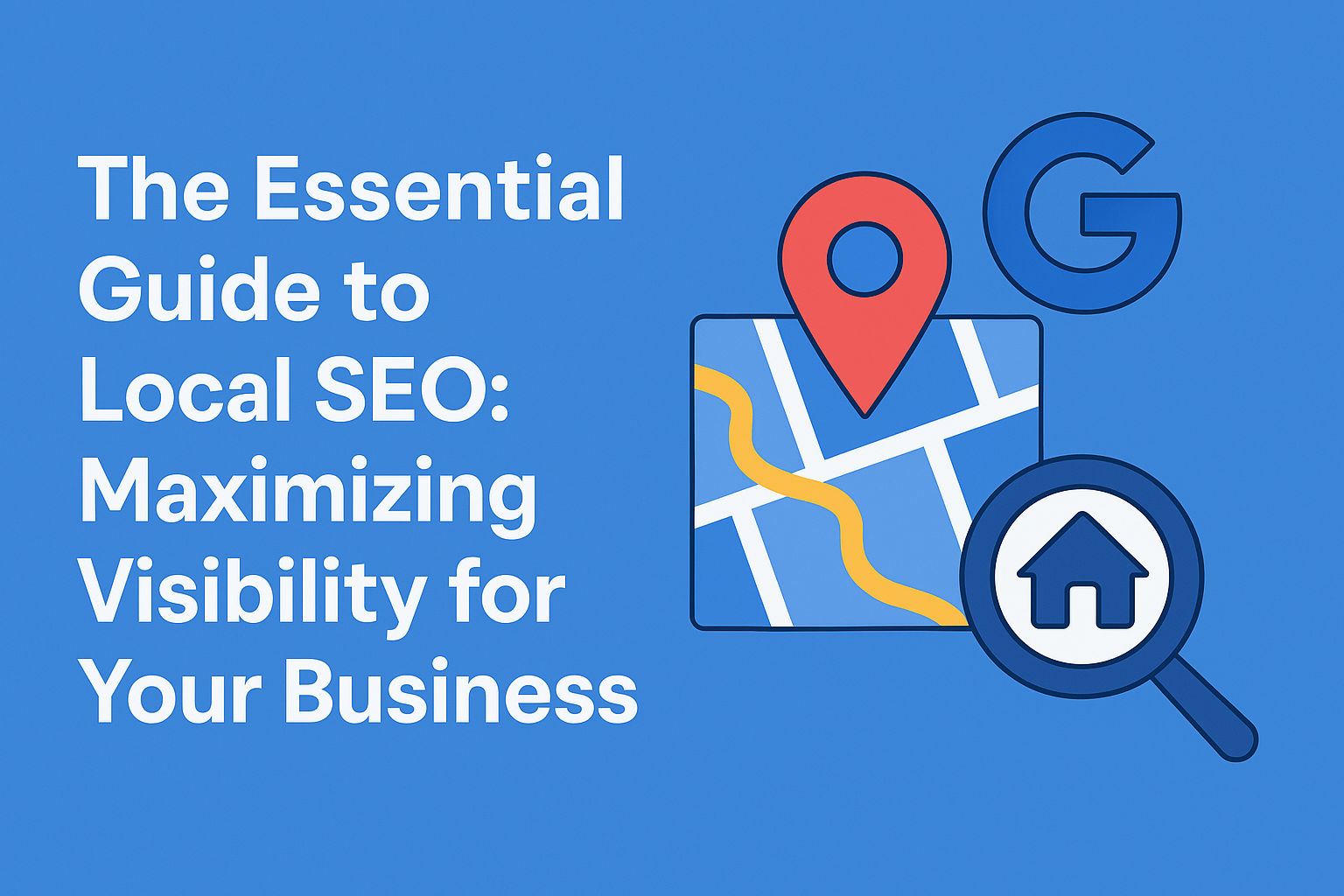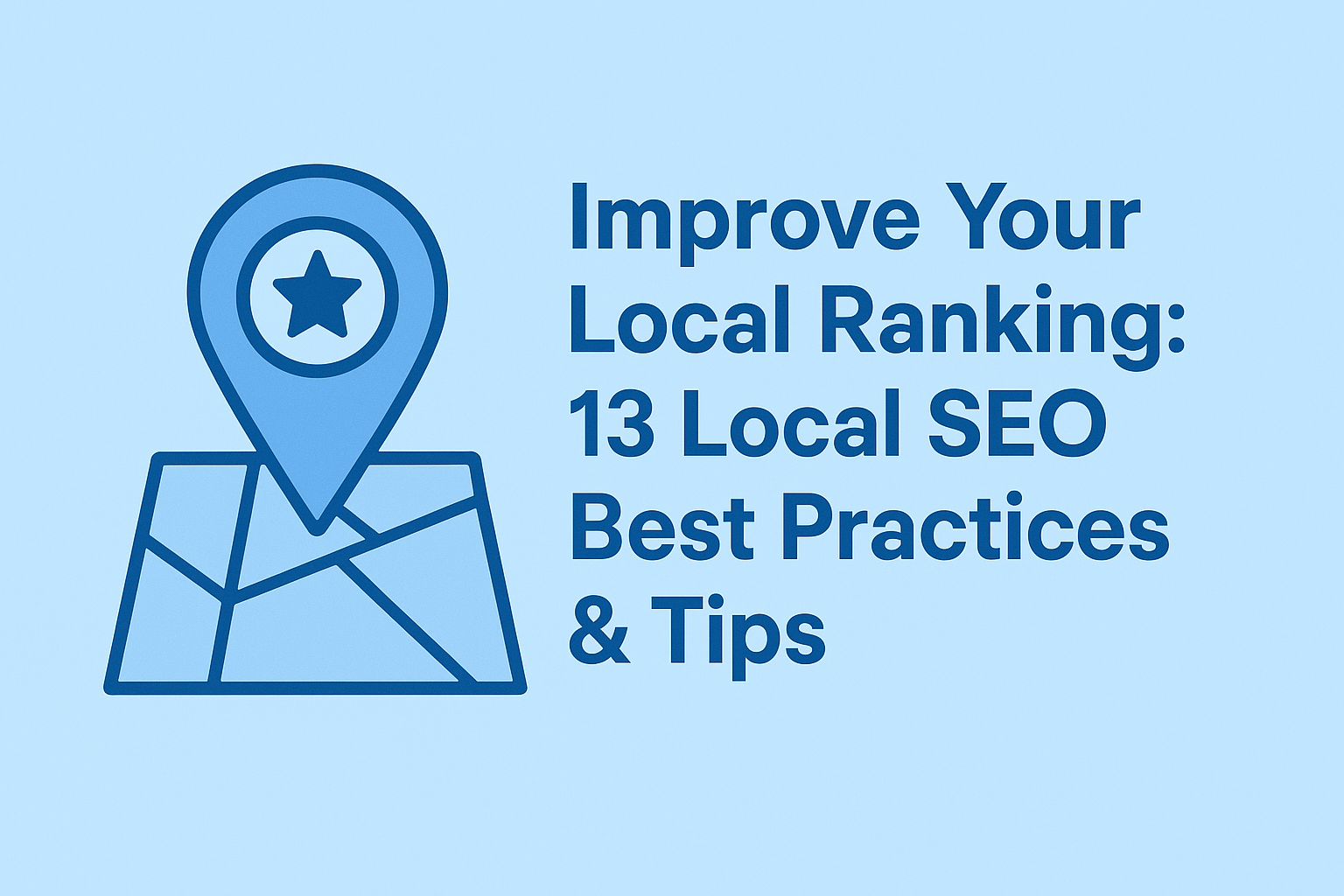Unveiling the Deadly Sins of Search Engine Optimization: A Marketer’s Guide

In the vast realm of digital marketing, where online visibility can make or break a business, Search Engine Optimization (SEO) plays a pivotal role. By optimizing their websites and content for search engines, businesses strive to improve their organic rankings and attract targeted traffic. However, like any practice, SEO is not immune to its own set of pitfalls and missteps that can hinder success.
Through this comprehensive guide, we will delve into the core aspects of SEO, uncovering the practices that are considered sins within the industry. By understanding and addressing these deadly sins, marketers can refine their SEO strategies, enhance their online presence, and ultimately achieve their digital marketing goals.
So, whether you’re a seasoned SEO professional or a newcomer to the field, join us on this enlightening journey as we uncover the deadly sins of SEO and equip you with the knowledge and tools to navigate the ever-evolving world of search engine optimization. Let’s embark on this exploration to ensure that your website’s SEO practices are virtuous, ethical, and designed to achieve sustainable success.
Sin 1: Keyword Stuffing
Keyword stuffing refers to the practice of excessively and unnaturally cramming keywords or phrases into a webpage’s content, meta tags, or other areas solely for the purpose of manipulating search engine rankings. It involves the repetition of keywords in an unnatural manner, often sacrificing the quality and readability of the content.
Negative impacts on SEO and user experience
Keyword stuffing may have detrimental effects on both SEO and user experience:
Search Engine Penalties:
Search engines have become increasingly sophisticated in identifying keyword stuffing. Websites that engage in this practice may face penalties, including decreased rankings or even complete removal from search engine results.
Poor User Experience:
Keyword-stuffed content is often difficult to read and lacks meaningful value for users. Visitors to the website may find the content unappealing, resulting in higher bounce rates, decreased user engagement, and a negative impact on overall user experience.
Strategies to avoid keyword stuffing and optimize content effectively:
Focus on Relevance:
Prioritize relevance and natural language usage. Create content that genuinely addresses the users’ needs and provides valuable information.
Conduct Proper Keyword Research:
Identify relevant keywords and phrases that align with your content and target audience. Use keyword research tools to find a balance between search volume and competition.
Incorporate Keywords Naturally:
Integrate keywords organically within the content, ensuring that they flow naturally and contribute to the readability and coherence of the text.
Diversify Keyword Usage:
Instead of excessively repeating a single keyword, use variations, synonyms, and related terms to make the content more diverse and comprehensive.
Prioritize User Experience:
Focus on creating high-quality, engaging, and informative content that satisfies users’ intent. Consider user experience factors such as readability, formatting, and multimedia elements.
Optimize Metadata:
Craft concise and compelling meta titles and descriptions that accurately represent the content and entice users to click. Avoid stuffing keywords in these elements.
Seek Feedback:
Have others review your content to ensure it reads naturally and avoids keyword stuffing. Their fresh perspective can provide valuable insights.
Sin 2: Thin Content
Thin content refers to web pages that lack substantive or meaningful content for users. It typically provides minimal value, often consisting of shallow, superficial, or duplicate content. Thin content can have several consequences:
Lower Search Engine Rankings:
Search engines prioritize high-quality, informative content. Websites with thin content may receive lower rankings, reducing their visibility and organic traffic.
Decreased User Engagement:
Thin content fails to engage and satisfy users, leading to higher bounce rates, shorter visit durations, and lower overall user engagement.
Negative Reputation:
Websites that consistently offer thin content may develop a reputation for being unreliable or untrustworthy, which can harm their brand image and credibility.
Differentiating between quality content and thin content is crucial for effective SEO:
Quality Content:
Quality content is comprehensive, informative, and engaging. It provides value to users by answering their questions, addressing their needs, or offering unique insights. It is well-researched, well-written, and often incorporates multimedia elements, such as images, videos, or infographics.
Thin Content:
Thin content, on the other hand, lacks substance and depth. It may be overly short, lack relevant details, or offer minimal insights. It often fails to provide a unique perspective or value proposition to users.
Techniques to create valuable, in-depth content for improved SEO:
Conduct Thorough Research:
Before creating content, conduct comprehensive research on the topic to gather relevant information, statistics, and insights. This ensures that your content is well-informed and provides value to users.
Aim for Comprehensive Coverage:
Create content that comprehensively covers the topic, addressing key aspects, subtopics, and related questions. This allows users to find all the information they need in one place, increasing the value of your content.
Use Visuals and Multimedia:
Enhance your content with visuals, such as images, videos, or infographics, to provide a richer and more engaging experience for users. Visual elements can help illustrate concepts, break up text, and improve overall readability.
Incorporate Originality and Uniqueness:
Provide a unique perspective or offer original insights to differentiate your content from others in the same niche. This helps establish your authority and attracts users seeking fresh perspectives.
Optimize Readability:
Format your content in a reader-friendly manner by using subheadings, bullet points, and short paragraphs. This enhances readability and makes it easier for users to consume and understand the content.
Regularly Update and Improve:
Periodically revisit and update your content to ensure its accuracy and relevance. This demonstrates your commitment to providing up-to-date information and encourages users to return to your website.
Sin 3: Black Hat SEO Tactics
Black hat SEO tactics are unethical and manipulative practices aimed at artificially boosting search engine rankings. These techniques often violate search engine guidelines and aim to exploit loopholes in algorithms.
Examples of black hat SEO techniques include:
Keyword Stuffing:
Excessive and unnatural use of keywords to manipulate rankings.
Cloaking:
Presenting different content to search engines and users to deceive search engine crawlers.
Link Schemes:
Engaging in link manipulation, such as buying or exchanging links solely for improving rankings.
Hidden Text or Links:
Hiding text or links from users but making them visible to search engines.
Content Scraping:
Copying content from other websites without permission or proper attribution.
Negative SEO:
Deliberate attempts to harm competitors’ rankings through tactics like spamming their website with low-quality links.
Consequences of engaging in black hat practices:
Engaging in black hat SEO tactics can lead to severe consequences for your website:
Penalties and Deindexing:
Search engines, such as Google, penalize websites that employ black hat techniques. This can result in a significant drop in rankings or even removal from search engine indexes.
Reputation Damage:
Using unethical tactics can damage your brand’s reputation and trustworthiness among users, making it challenging to regain their confidence.
Long-Term Consequences:
The negative impact of black hat SEO practices can persist for an extended period, requiring significant effort and time to recover.
Loss of Organic Traffic:
When search engines penalize your website, your organic visibility diminishes, resulting in a loss of valuable organic traffic.
SEO strategies to employ:
To ensure ethical and sustainable SEO practices, focus on the following strategies:
Quality Content Creation:
Develop high-quality, valuable content that aligns with user intent and provides unique insights or solutions.
Natural Link Building:
Earn links organically through the creation of exceptional content, outreach, and building relationships with relevant websites.
On-Page Optimization:
Optimize your website’s structure, metadata, and content to improve user experience and search engine accessibility.
User-First Approach:
Prioritize user experience by focusing on website speed, mobile optimization, intuitive navigation, and engaging design.
White Hat Link Building:
Focus on building genuine relationships with influencers, industry authorities, and other websites to earn natural and relevant backlinks.
Social Media Engagement:
Utilize social media platforms to engage with your audience, share valuable content, and drive organic traffic to your website.
Continuous Learning and Adaptation:
Stay up-to-date with search engine guidelines and industry trends to ensure your SEO strategies remain ethical and effective.
Sin 4: Ignoring Mobile Optimization
Mobile optimization is of paramount importance in today’s digital landscape due to the widespread use of smartphones and tablets. Consider the following reasons why mobile-friendly websites are crucial for SEO:
User Behavior:
A significant portion of internet traffic comes from mobile devices. Search engines prioritize delivering a positive user experience, and if your website is not mobile-friendly, it may be penalized in search rankings.
Mobile-First Indexing:
Search engines, like Google, have shifted towards mobile-first indexing, which means they primarily use the mobile version of a website for indexing and ranking. If your website is not optimized for mobile, it may suffer in search engine rankings across all devices.
Mobile Searches and Local SEO:
Mobile devices are often used for local searches, such as finding nearby businesses or obtaining quick information. Optimizing your website for mobile enhances your visibility in local search results, improving your chances of attracting relevant local traffic.
Consequences of neglecting mobile optimization:
Ignoring mobile optimization can have significant repercussions for your website’s SEO and overall performance:
Poor User Experience:
Non-optimized websites on mobile devices lead to a frustrating user experience. Visitors may struggle with slow page load times, unresponsive designs, and difficulty in navigating or interacting with the site. This can result in high bounce rates and diminished user engagement.
Decreased Search Rankings:
Search engines prioritize mobile-friendly websites in mobile search results. Neglecting mobile optimization may lead to lower rankings and decreased visibility, resulting in reduced organic traffic and missed opportunities for conversions.
Competitive Advantage:
If your competitors have invested in mobile optimization and you haven’t, they may attract more mobile traffic, gain higher search rankings, and establish a competitive advantage over your business.
Strategies and tools to ensure mobile-friendly SEO:
To ensure mobile-friendly SEO and cater to mobile users effectively, consider the following strategies and tools:
Responsive Design:
Adopt a responsive web design approach that automatically adjusts the layout and content based on the user’s screen size and device. This ensures a consistent and optimized experience across desktop and mobile devices.
Mobile Page Speed:
Optimize your website’s load time for mobile devices by minimizing file sizes, leveraging browser caching, and employing content delivery networks (CDNs).
Mobile-Friendly Navigation:
Design intuitive and user-friendly navigation menus and buttons that are easy to tap, scroll, and navigate on smaller screens.
Mobile-Optimized Content:
Format your content for mobile consumption by using shorter paragraphs, concise headings, bullet points, and visual elements that enhance readability and engagement.
Mobile Usability Testing:
Regularly test your website’s mobile compatibility using tools like Google’s Mobile-Friendly Test and perform user testing on various mobile devices to ensure optimal performance.
Accelerated Mobile Pages (AMP):
Implement AMP, a framework that creates ultra-fast loading versions of web pages for mobile devices, improving user experience and search engine visibility.
Mobile Analytics:
Utilize mobile analytics tools, such as Google Analytics, to track and analyze mobile user behavior, identify areas for improvement, and make data-driven decisions to optimize your mobile SEO strategies.
Sin 5: Neglecting On-Page Optimization
On-page optimization refers to the process of optimizing individual web pages to improve their visibility and search engine rankings. It plays a crucial role in SEO for the following reasons:
Relevance to Search Queries:
On-page optimization ensures that your web pages are highly relevant to the keywords and search queries users enter in search engines. This increases the chances of your pages appearing in relevant search results.
Enhanced User Experience:
On-page optimization focuses on improving user experience by making your web pages more readable, engaging, and accessible. This leads to higher user satisfaction, longer visit durations, and increased engagement metrics, all of which are valued by search engines.
Optimization of Ranking Factors:
On-page elements, such as meta tags, headings, keyword usage, and internal linking, contribute to search engine ranking algorithms. Proper optimization of these factors helps search engines understand your content and rank it appropriately.
Common on-page optimization mistakes to avoid:
To avoid detrimental on-page optimization mistakes, be aware of the following pitfalls:
Keyword Stuffing:
Excessive and unnatural keyword usage that compromises the quality and readability of your content.
Poor Meta Tags:
Neglecting to craft unique and compelling meta titles and descriptions that accurately represent your page’s content and entice users to click.
Thin Content:
Providing insufficient or shallow content that fails to address user needs or lacks depth and comprehensiveness.
Ignoring Header Tags:
Not utilizing header tags (H1, H2, etc.) properly to structure your content and highlight important sections.
Lack of Internal Linking:
Neglecting to include relevant internal links within your content to improve navigation, user experience, and search engine crawlers’ understanding of your website’s structure.
Slow Page Load Speed:
Failing to optimize images, minify code, or leverage caching techniques, leading to slow page load times that negatively impact user experience and search rankings.
Best practices and tips for effective on-page optimization:
To ensure effective on-page optimization, consider implementing the following best practices:
Comprehensive Keyword Research:
Conduct thorough keyword research to identify relevant and high-value keywords to target in your content and meta tags.
High-Quality Content:
Create unique, valuable, and engaging content that satisfies user intent and provides in-depth information on the topic.
Proper Keyword Placement:
Strategically place keywords in your meta tags, headings, URL slugs, and throughout your content, while ensuring they appear naturally and don’t disrupt the flow.
Meta Tag Optimization:
Craft compelling and concise meta titles and descriptions that accurately summarize your page’s content and include relevant keywords.
Header Tag Structure:
Use header tags (H1, H2, etc.) to structure your content, making it easier to read and understand for both users and search engines.
Internal Linking:
Incorporate relevant internal links within your content to guide users to related pages and improve the crawling and indexing of your website.
Image Optimization:
Optimize images by compressing file sizes, using descriptive alt text, and utilizing appropriate image file formats to improve page load speed and accessibility.
User-Friendly URLs:
Create descriptive and keyword-rich URLs that are easy to read and understand for both users and search engines.
Mobile Optimization:
Ensure your on-page elements are optimized for mobile devices, including responsive design, mobile-friendly formatting, and fast load times.
Conclusion
In conclusion, effective search engine optimization (SEO) is crucial for digital marketers aiming to maximize their online presence and attract organic traffic. Throughout this blog, we have discussed the deadly sins of SEO and provided insights on how to address them.
Keyword stuffing, the first sin, can lead to negative impacts on both SEO and user experience. By implementing strategies to avoid keyword stuffing and optimizing content effectively, marketers can achieve better rankings and provide valuable information to their audience.
By avoiding these deadly sins and implementing effective SEO strategies, digital marketers can increase their online visibility, attract targeted organic traffic, and achieve sustainable growth in the competitive digital landscape. Remember, SEO is an ongoing process that requires continuous learning, adaptation, and adherence to ethical practices. Stay up-to-date with the latest trends and guidelines, monitor your performance, and make data-driven decisions to continuously improve your SEO efforts.
FAQs
Why is SEO important for digital marketing?
SEO is important because it helps businesses increase their online visibility, attract targeted organic traffic, and improve their website’s ranking in search engine results. It allows businesses to reach their target audience effectively and drive valuable traffic to their website, leading to potential conversions and business growth.
How can I avoid keyword stuffing in my content?
To avoid keyword stuffing, focus on creating high-quality, valuable content that is relevant to your target audience. Conduct thorough keyword research and incorporate keywords naturally throughout your content. Aim for a balanced and natural use of keywords, ensuring they fit seamlessly within the context of your content.
How can I ensure my website is mobile-friendly?
To ensure your website is mobile-friendly, adopt responsive web design, which allows your website to adapt and display properly on different screen sizes and devices. Optimize your page load speed for mobile devices, ensure your content is easily readable and accessible on smaller screens, and use mobile-friendly navigation menus and buttons.

